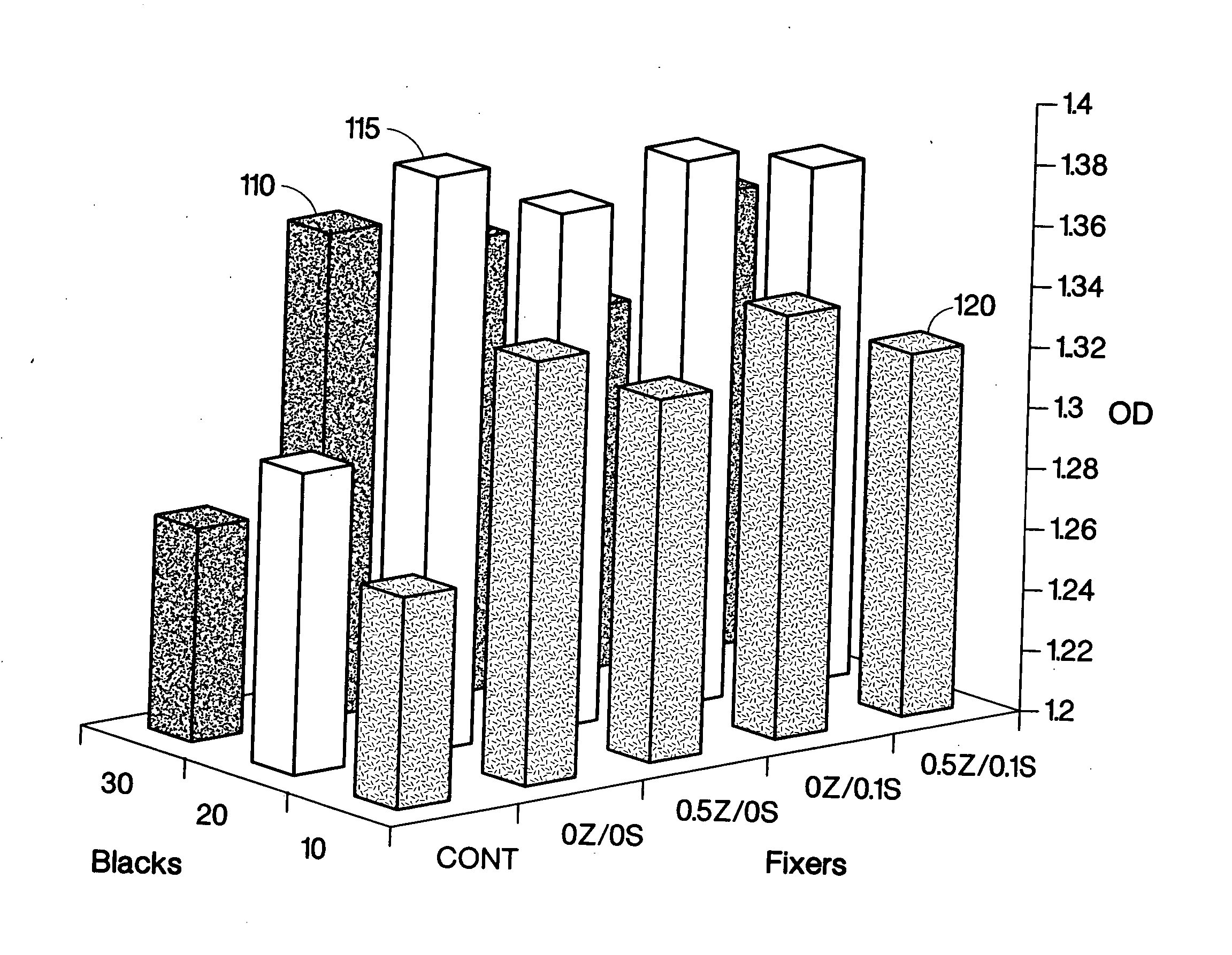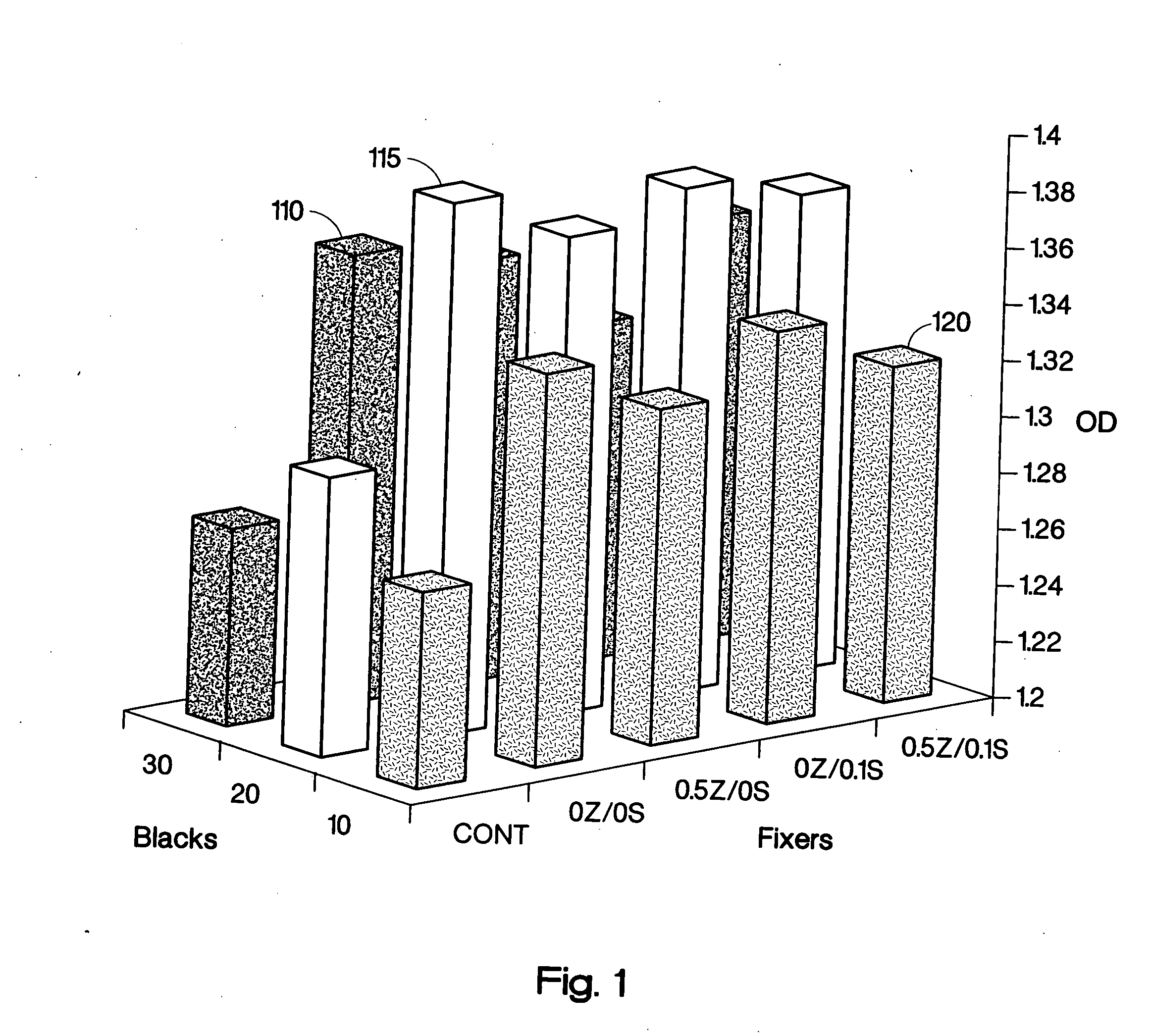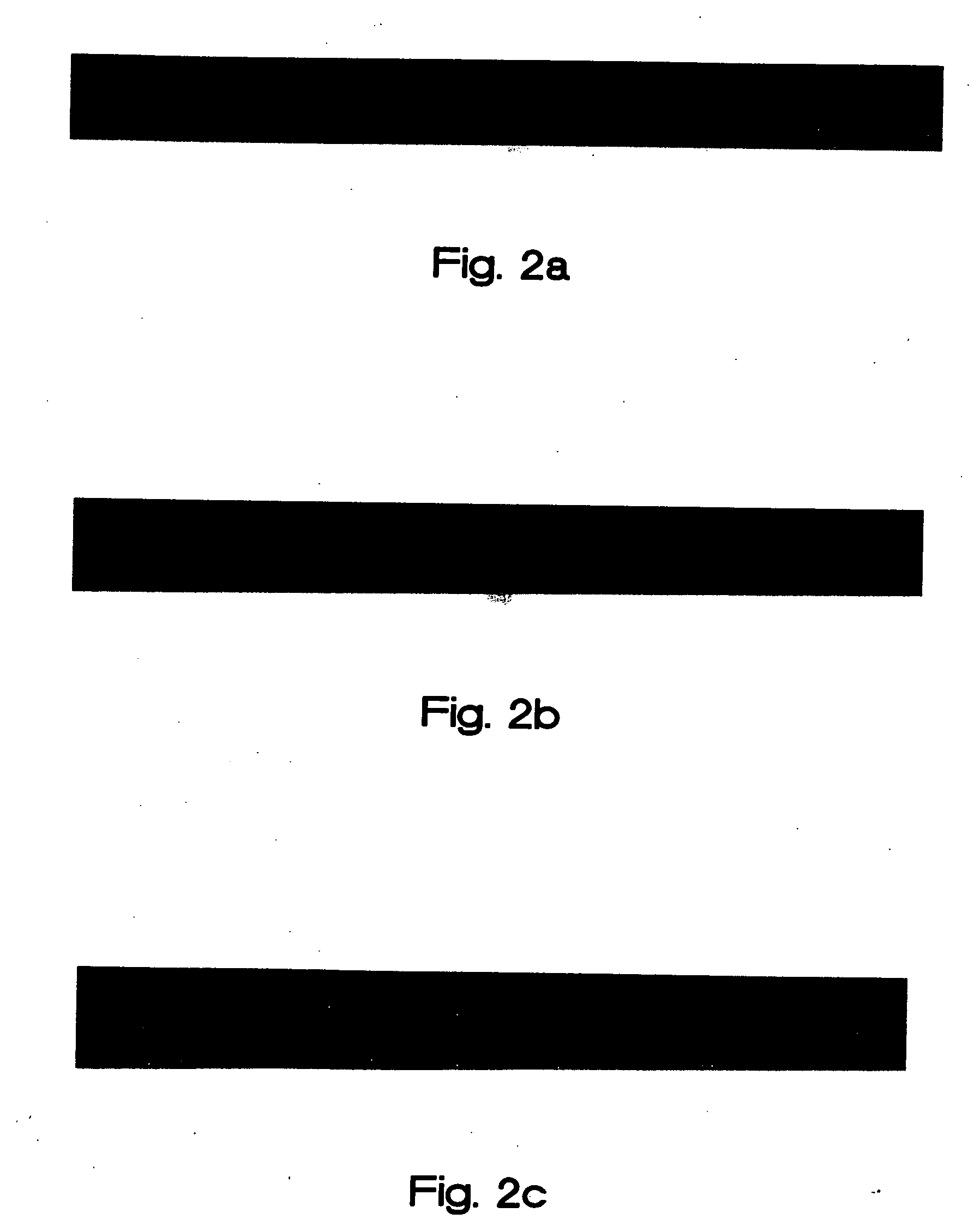Slow-penetrating inkjet fixer composition and methods and systems for making and using same
a technology of slow-penetrating inkjet fixer and composition, which is applied in the direction of inks, instruments, measurement apparatus components, etc., can solve problems such as non-uniform filling
- Summary
- Abstract
- Description
- Claims
- Application Information
AI Technical Summary
Benefits of technology
Problems solved by technology
Method used
Image
Examples
example 1
[0054] Three different black ink-jet ink formulations were tested for printed optical density on paper substrate when used with fixers varying in their surfactant compositions.
[0055] The first ink (10) had 0.5% of Surfynol 465 (HLB=13). The second ink (20) had 0.5% of Surfynol SEF (HLB=4-5). The third ink (30) had 0.5% of Surfynol CT-111 (HLB=8-11). All three inks had self-dispersed black pigment, an acrylic resin, a polyurethane resin as well as surfactants and solvents.
[0056] The fixers were, as follows: a fixer using a conventional formula (CONT), a surfactant-free fixer (0Z / 0S), a fixer containing only Zonyl FSN as surfactant (0.5Z / 0S), a fixer containing only a small amount of Surfynol 465 as surfactant (0Z / 0.1S), and a fixer containing both Zonyl FSN and Surfynol 465 (05Z / 0.1S).
[0057] All the new fixers increased black OD significantly over conventional fixer. Mottle was much improved as well. Surfactant-free fixers registered the highest gains in black optical density, fol...
example 2
[0060] Three different combinations of fixer and magenta ink were printed on conventional substrate. They were applied sequentially on an area to create area fill on conventional substrate.
[0061] Conventional fixer was mixed with conventional magenta ink on substrate by printing the ink on top of the previously applied fixer to create an area fill on the substrate. The quality of the area fill was mottled, having areas of darker and lighter density, and a low optical density (OD=1.23) was measured. FIG. 2a is a digitized scan of the area fill covered by the mixture of conventional fixer and conventional magenta ink.
[0062] Fixer of the present invention, having a slowed down media penetration rate, was mixed with conventional magenta ink on a substrate by printing the ink on top of the already applied fixer to make an area fill on the substrate. The quality of the area fill was substantially improved, having little mottle and a substantially increased optical density (OD=1.42). How...
example 3
[0064] Two different combinations of fixer and black ink were printed on conventional substrate. They were applied sequentially on an area to create area fill on conventional substrate.
[0065] Conventional fixer was mixed with conventional black pigment ink on substrate by printing the ink on top of the previously applied fixer to create an area fill on the substrate. The quality of the area fill was mottled, having areas of darker and lighter density, and a low optical density (OD=1.37) was measured. FIG. 3a is a digitized scan of the area fill covered by the mixture of conventional fixer and conventional black pigment ink.
[0066] Fixer of the present invention, having a slowed down media penetration rate, was mixed with conventional black pigment ink on a substrate by printing the ink on top of the already applied fixer to make an area fill on the substrate. The quality of the area fill was substantially improved, having little mottle and a substantially increased optical density ...
PUM
 Login to View More
Login to View More Abstract
Description
Claims
Application Information
 Login to View More
Login to View More - R&D
- Intellectual Property
- Life Sciences
- Materials
- Tech Scout
- Unparalleled Data Quality
- Higher Quality Content
- 60% Fewer Hallucinations
Browse by: Latest US Patents, China's latest patents, Technical Efficacy Thesaurus, Application Domain, Technology Topic, Popular Technical Reports.
© 2025 PatSnap. All rights reserved.Legal|Privacy policy|Modern Slavery Act Transparency Statement|Sitemap|About US| Contact US: help@patsnap.com



